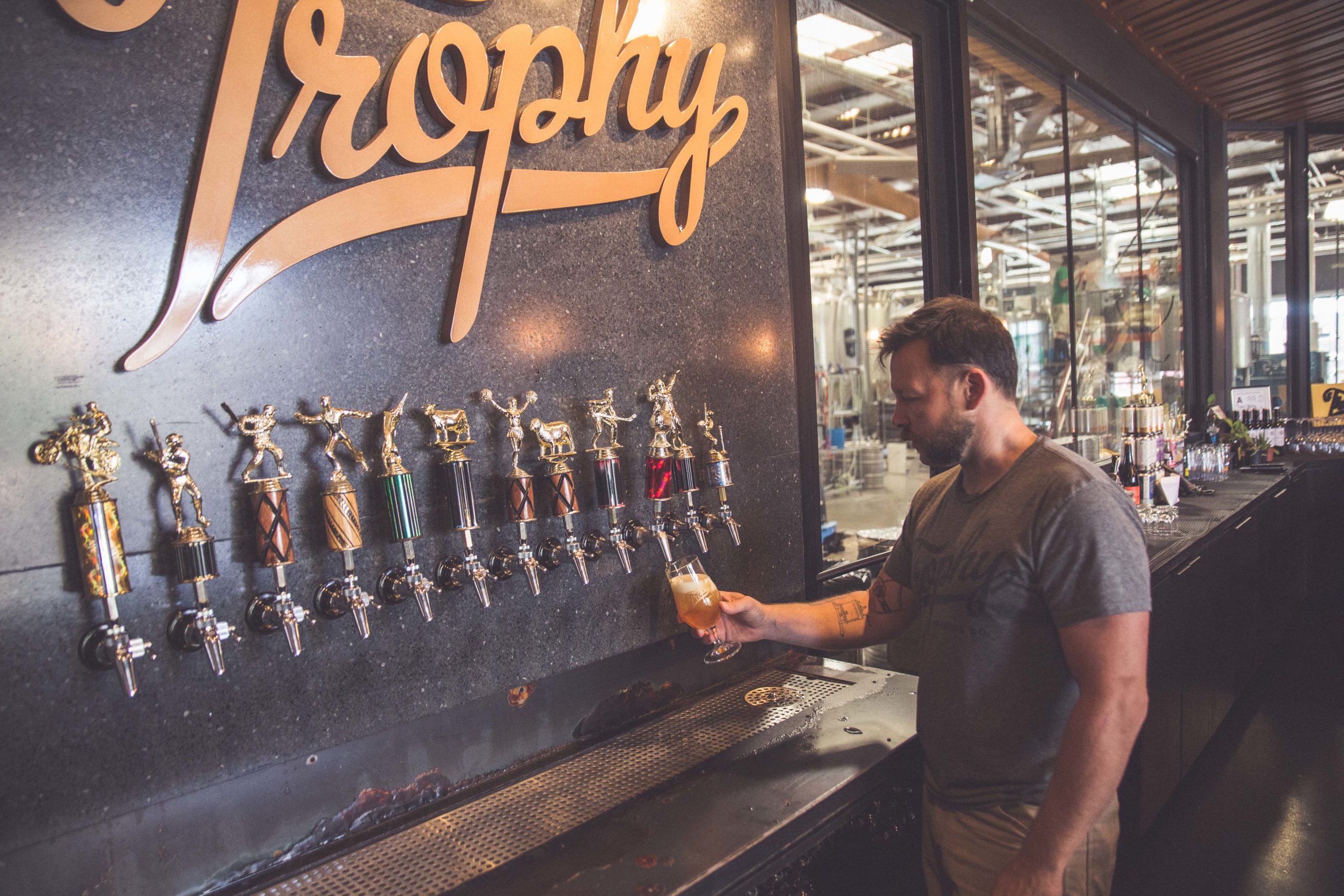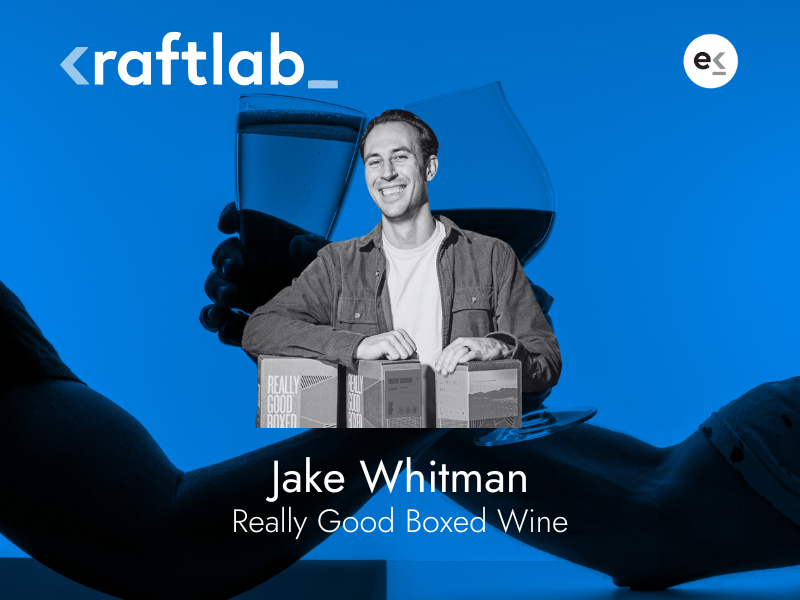We all have to start somewhere. Whether you’ve been in the craft brewing industry for years or you’re just opening your taproom doors, marketing is one of the basic services your business needs to stay afloat. But don’t jump in without a plan — that’s a no-no. This guide will help you develop your own marketing strategy from start to finish.
As a companion to this post, we created a downloadable marketing plan template so you have a centralized spot to establish your goals and set a precedent for your marketing strategy to reference as your business grows. Now, sit down, pen in hand, and get to work on this strategy for your brewery.
Post Contents
Identify Areas of Opportunity & Challenges
Taking the first step is often the hardest part, but before you even get there, you should know where you’re going and what will stand in your way.
The brewing industry has seen consistent growth over the past several years until 2020, when the COVID-19 pandemic hit. While growth is exciting, more breweries means more competition. If you’re in a spot like Vermont, which has the most breweries per capita in the U.S. at 15.4, you’re going to have to work a lot harder at marketing than you might in Mississippi, which is home to 0.6 breweries per capita (last in the country).
Use the following list of considerations alongside the downloadable companion to this document as you fill in a SWOT analysis about your business. A SWOT analysis lays out your strengths, weaknesses, opportunities, and threats as a business. This will give you clarity as to where you stand in the market, what you’re succeeding at, and where you need help.
- Location
- Physical space/capacity
- Budget
- Staff size
- Product offering
- Quality of products
- Community partnerships
- Distribution channels
- Competition
This is by no means a complete list of considerations. But it should get you thinking in the right direction.
Establish Mission & Goals
Now that you’re feeling confident in your strengths and seeking to improve, you can set your mission and goals. Focus on what makes your taproom unique and what will (or already does) draw in customers.
It may be a figure of speech, but many people really do vote with their dollar, and heading to one brewery over another is no exception. In fact, the 2020 Zeno Strength of Purpose Study found that consumers were four to six times more likely to trust, champion, and purchase from companies that defined a strong purpose. How will you define your brewery’s mission?
You should also decide what concrete goals you have for your business and how marketing can help you accomplish these goals. For example, you may have a goal to increase your revenue by $200K or to produce 5,000 barrels this year. Think about the final destination you want to reach and ensure you have a solid marketing plan that will help you get there.
Now, create an elevator pitch for your business. Think: what do you want to communicate with potential customers? Prospective employees? Investors or partners? This “pitch” should be quick and highlight your company mission. If someone were to ask you about your brewery, what would you say in 30 seconds? This pitch will be something you can come back to time and time again to help recruit employees and customers and establish your new marketing strategy.
Pinpoint Your Target Audience
Understanding your audience and their needs is just as important as understanding the needs of your business. Before you can understand these needs, however, you need to define your ideal customer.
It may feel weird at first to set one particular group you’re targeting for business. After all, you want to attract as many people as possible, right? Sure. But, your brews are just not made for everyone. They should be made with a particular group of consumers in mind. Think about how some breweries attract more young people while others appeal more to families.
If you’re struggling to pinpoint your target customer, you have a few options for gathering insights. First, talk to your front-of-house and sales staff members. They are the ones interacting with customers face-to-face every day. Ask them what people like, what they dislike, and why they come to your taproom or order your beer. You could do this in a face-to-face meeting or with an anonymous survey to collect feedback your employees may not want to say out loud.
In our downloadable, you’ll find a list of qualities to define your target audience. Once you know who you are trying to reach, you can tailor the rest of your marketing strategy with your target in mind. You’ll be able to build out the parts of your brewery that need some work or maintain the parts that are already an asset to your customers.
Customer personas are another ingredient to defining your target customers. These personas put faces, names, and stories with your ideal customers.
For example, a brewery in an up-and-coming neighborhood where young people live is likely to attract a young, salaried crowd with pets, but no children. You could say your ideal customer is Christopher who works in finance from 8 a.m. – 6 p.m. and likes to come on weeknights with his friends after they’ve hit the gym. Maybe they typically stay for two rounds but aren’t big on food.
It can be helpful, too, to find images of who you think these people are. Seeing faces is likely to help you picture the kinds of content, the atmosphere, and the beers your customers will appreciate most.
Lay Out Product Offering & Strategy
Your physical products are, obviously, an integral part of your business. They represent your mission, your values, and what you care about producing as a brewer.
No two brewers are just alike. Some want to create highly popular, award-winning flagship beers. Others would prefer to get creative and pop out new beers each month or special releases every season. Whatever your speed, make it yours.
For the more constant brewer, think about what your signature beers will be. Whether they’re IPAs, porters, or something else, these staples should be consistent, tasty, and specific to your brewery.
The specialty brewer should create a strategy for determining which special brews will make the lineup each time. You could specialize in one style of beer, mix it up depending on what the season’s ingredients call for, or anything in between.
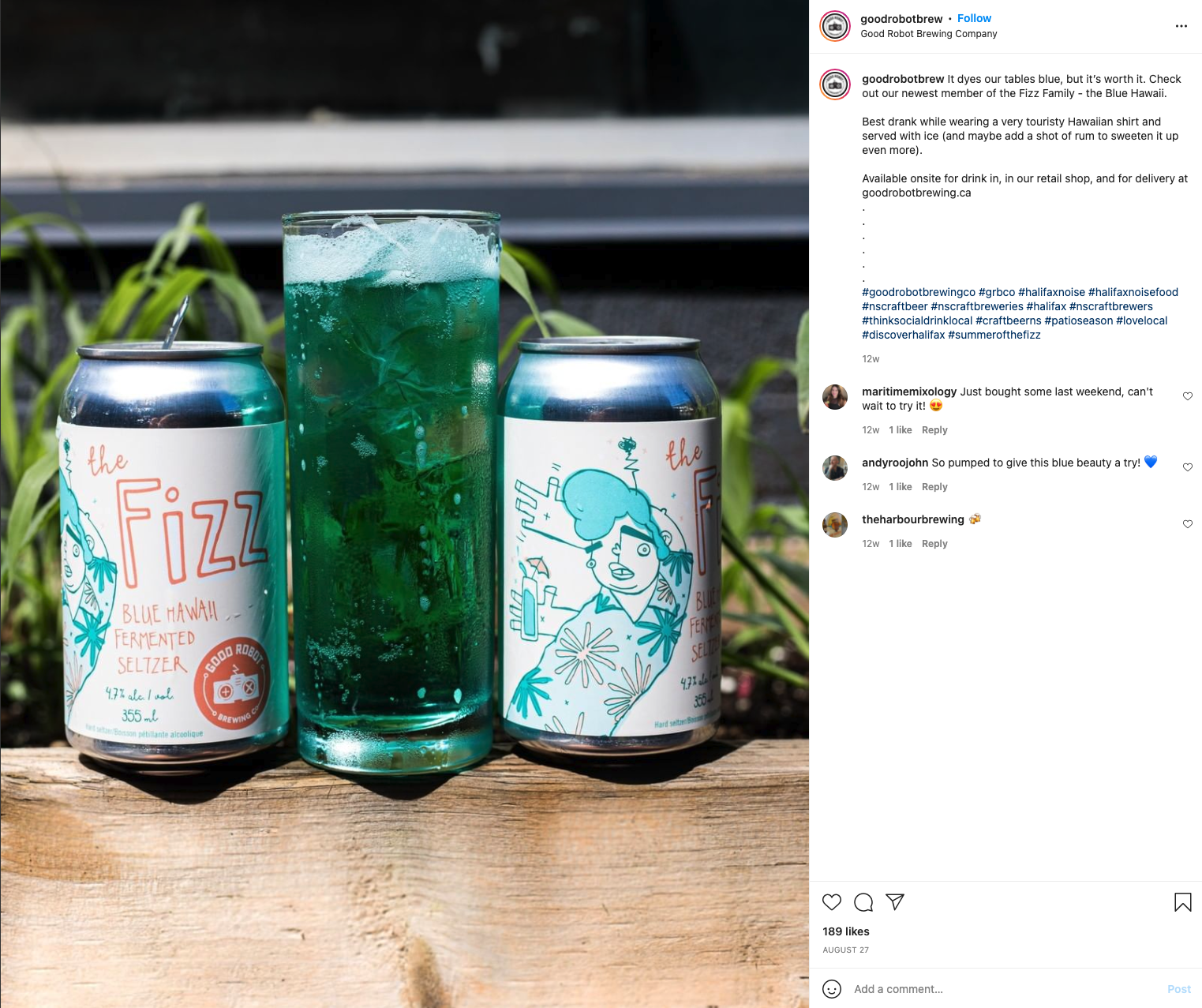
This isn’t playtime, however. You should think about the strategy you’ll take compared to other brewers.
Say you are establishing your taproom in a town with three other breweries. One is known for its stouts, the next is known for its pilsner, and the third is known for its porters. Where does that leave you?
If consistency is your speed, think about flagship products: They should be unique and popular. If you’re facing the situation above, maybe it’s time you consider IPAs you can hit the ground running with. Your atmosphere will set you apart, sure, but so will having unique products.
Another consideration is whether you’ll stick to beer or expand to include seltzer, non-alcoholic beer, or other beverage options.
Consider:
- Would diversifying your product offering this way be helpful to your brewery?
- Are customers frequently asking for gluten-free options?
- Do customers want the option of something sweet?
- Do your customers look for the latest trends in the alcohol industry?
If the answer is yes, this could be a good move, especially if your competitors haven’t hopped on the train yet.
You can bring in these products in a number of ways. One option is obviously brewing it yourself. Good Robot Brewing does this successfully, and even brands their housemade hard seltzer as “the fizz.” This also provides Good Robot with another seasonal item to have fun with (a marketing idea in itself).
Partnerships are a valuable way to bring something to your customers that you can’t produce yourself. Plus, they could get you in with another local maker — a sure win-win for you both.
Pricing Strategy
Now that you’ve established your product offering, you can set the prices for each brew. Making beer takes time, passion, and all the best ingredients — so you want to ensure you’re getting your money’s worth, too.
First, consider your pricing for the taproom versus distributor and retailer pricing. Retailers are going to mark up your product before it hits their shelves. So, consider what price would be enough to cover your costs and make some profit, but don’t forget about the customer. If you price a six-pack at $14 for the retailer, they’ll probably mark it up to $18-$19. If consumers are willing to pay that, great! If not, it may be worthwhile to take a smaller profit on wholesale pricing because distributors are generally going to buy more at once, giving you a bit more consistency than individual purchases.
In your own taproom, the formula is much simpler. First, consider how much it costs you to brew a batch of beer. The raw materials are essential, but make sure you include the costs for labor, overhead, and how much it costs to run your tanks.
Now, think about what your desired profit margin is. What are your competitors charging for a comparable product? This shouldn’t be your only consideration, but it’s an important one. You might be able to get away with charging 50 cents or so more than your competitors, but probably not $2 more for a staple beer. Specialty brews give you a little more leeway. Smaller batches + more exclusivity = higher price tag. Plus, data from the National Retail Foundation demonstrate that consumers are paying more each year for seasonal products.
Don’t shy away from revisiting your pricing strategy. As time goes on, you may need to adjust prices to keep up with demand, the price of raw goods, paying for quality labor, this list goes on.
Do what’s necessary to stay in business and stay competitive. If customers are leaving your taproom because of the high prices, maybe it was the wrong move. Otherwise, do what you have to do. Customers expect gradual price increases over time.
Technology can really be your friend here. Don’t make things harder on yourself than necessary. Business management software can make it easy to understand your costs and calculate margins, along with other functionality.
Branding Your Business
Branding your business can be one of the most exciting parts of executing a marketing strategy. It can also be one of the most challenging.
Positioning
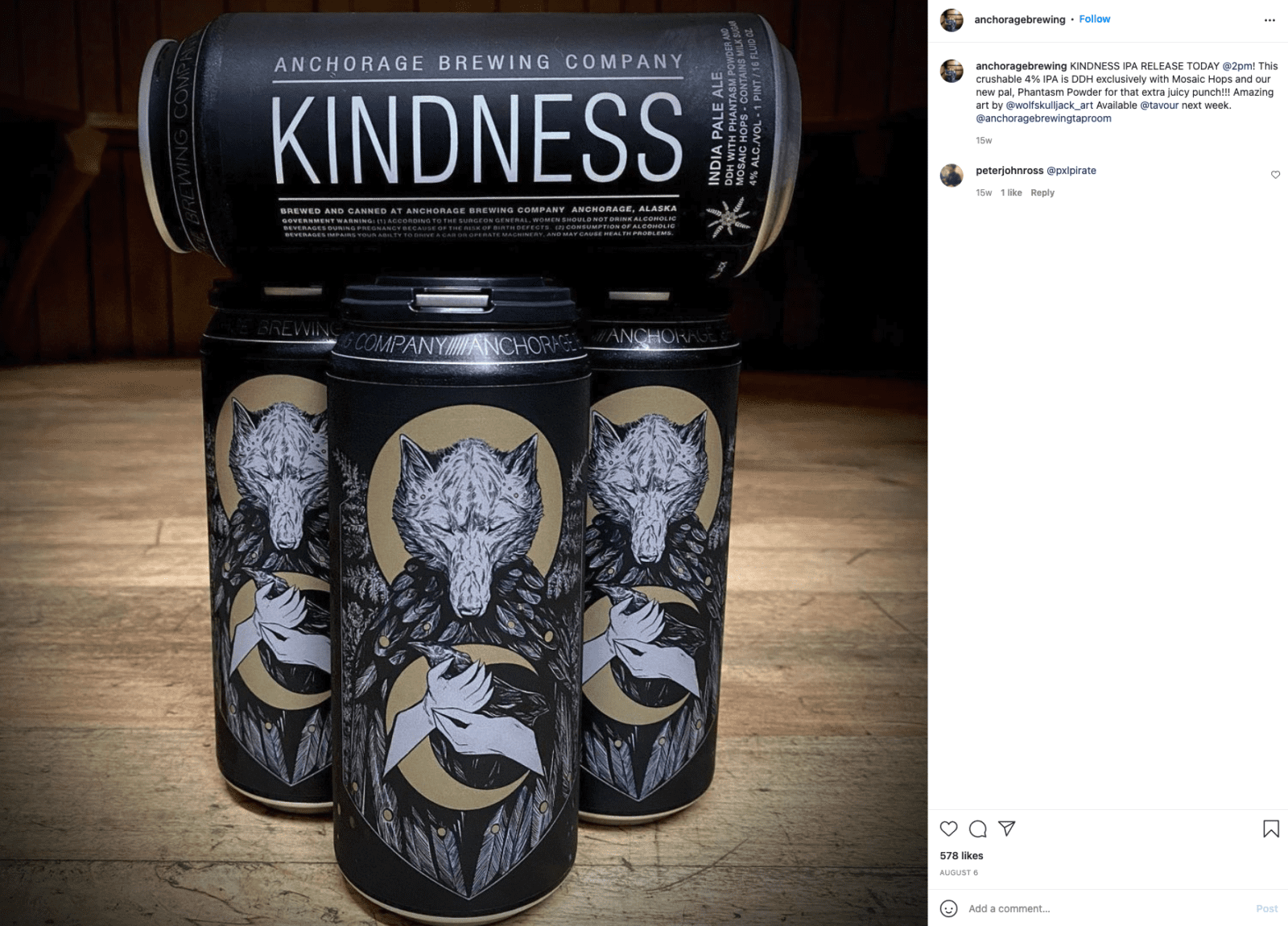
Brand positioning is defined as the way your target audience thinks of you in their head. Is it your service that sets you apart? Your unique seasonals? Your awesome event space? Think about what sets you apart from the competition and use that to your advantage.
You should consider both what you are known for and what you want to be known for. Is there a gap? If so, how can you mend it? Or, should you pivot?
Look, Feel, Design
How you present yourself visually to prospective customers is one of the many ways customers will decide whether to visit your taproom. But it could be the deciding factor.
Visual representation of your brand is essential to establishing your overall aesthetic. Consider your target audience, their interests, and why they keep coming back to you. Are they in it for a cozy feel with twinkling lights and live music? Or are they coming in for a clean, modern, and updated experience?
Another big question in the craft brewing world centers around label design. Just as you create your logo and website branding, the art you feature on your cans or bottles is another way to establish the look of your brand.
Some brewers might choose to showcase local artists on their cans. Others might keep it classic. Both of these options can be effective, it just depends on what you find valuable.
Anchorage Brewing Company makes a statement with every can release. This summer, the brewery released Kindness Hazy IPA with a label demonstrating an act of kindness with a nod toward the brewery’s home of Alaska. The label also was created by a local artist who regularly creates artwork for Anchorage Brewing. The artwork is part of Anchorage’s mission to take “extreme steps to produce some of the most unique beers ever made” according to their website.
Messaging
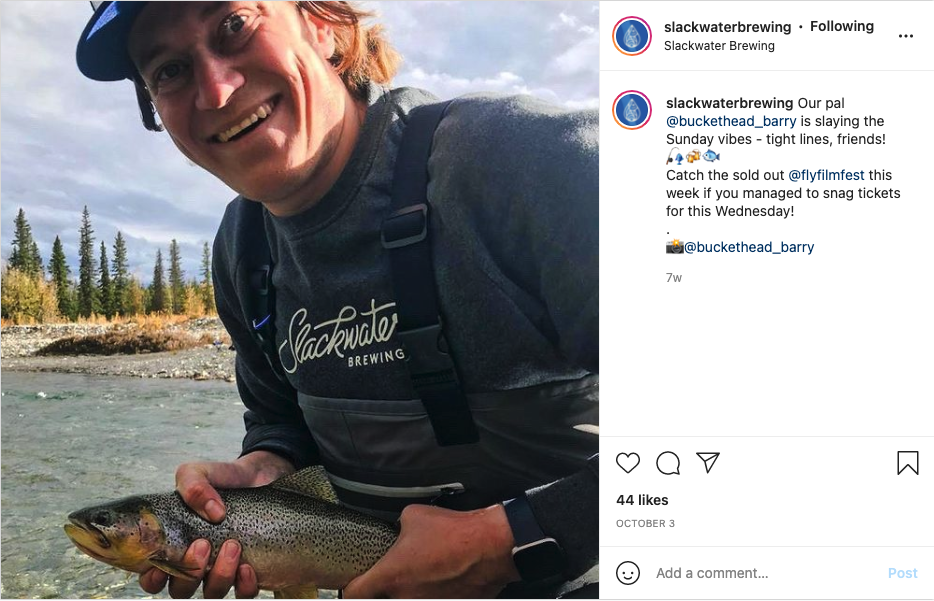
Have you ever heard the saying “the way you speak to yourself matters”? Well, the way you speak about yourself matters too. Brand messaging communicates your “voice” in every platform. From speaking engagements to advertising and social media, it’s all valuable to building rapport with your customers.
Think about your overall brand and your target audience when you develop this voice. Do you want to be more conversational or formal? Are you going to talk about personal stories or keep to business? Reflect on what’s important to you and your business. Are you passionate about social issues? Supporting local charities?
Consider your mission. Was there something special that inspired you to start your brewery? Use that in your messaging. Slackwater Brewing in British Columbia, Canada, says it is all about making beer for people who love nature. This is obvious by looking at their offerings, the content they post, and what they talk about. Posts like the one below can seem inconsequential, but they actually serve an important purpose: branding.
Slackwater’s press helps them out too. This story says that Slackwater is hosting a fly fishing film festival at their brewery. The couple who owns Slackwater went on and on in the story about their love for fly fishing and how the business was founded “‘mid-cast and hip-deep in a mountain stream,’” according to the owners. As we’ve established, how you speak about your business matters. Clearly the Slackwater brewing family has learned this, and it’s working to their advantage. By promoting their story and interests, they’re demonstrating that their brewery is a space for adventure-seekers who enjoy beer and a laid-back environment.
Evaluate
You can’t grow without learning from your mistakes. After you’ve spent some time establishing your brand and all its facets, evaluate the work you’ve done.
Are you getting the customers you want? Are your current customers coming back?
If the answer to these questions is yes, congratulations! You’ve created an accurate and effective positioning strategy.
If not, head back to the drawing board. Talk to your customers. Are they satisfied with what you’re offering? Who are you to them? These questions will provide you with a stronger guide to where your brand positioning should be headed.
Promotional Strategies
There are so many great options for promoting your brewery, sometimes it can be overwhelming. Whether you hired a marketing director or you’re trying to figure out the game on your own, it doesn’t hurt to lay out all of your options and focus your time, money, and energy on the strategies that are going to bring people and dollars through the doors.
Consider the following options:
- Social media
- Newsletters
- Website
- Apparel and other merchandise
- Events
- Partnerships
- Advertising online/in print publications
- PR relationships
- Search Engine Optimization (SEO)
This is by no means a complete list of your options, but it should give you an idea of how many opportunities you have when it comes to promotions.
Remember: You can’t do it all. You should stick to a few that you can dedicate resources to. You have a few options here, too. You could take it on yourself, hire a dedicated marketing staff member, or ask your current staff if anyone is interested in helping out. Consider your strengths and weaknesses, personal bandwidth, industry standards, and marketing trends when making this decision.
If social media isn’t your thing, but you understand its importance in the industry, maybe you enlist staff members to help you out or hire a third party to plan/design your social media strategy.
Some strategies are going to take more or less effort and time. So, you should also consider your network when making these decisions. For example, if you’re buddies with the editors of two major industry publications, your commitment to building PR relationships is going to be breezy. If not, it might take a little bit more work.
If you don’t have time to do something, don’t do it. Doing something halfway is not how you leave a positive impact on your customers. If they visit your Facebook only to find you haven’t posted since 2016, you should probably just eliminate that particular platform.
A dedicated marketing staff member can prioritize marketing your brewery and might set you apart from other local brewers who may not be social media aficionados. If you go this route, be sure the pay is set in your budget, or make that a goal for next year’s budget and spend time looking for a new hire. Most likely, you’ll want to search for someone who is a jack of all trades — they can do social media, build websites, run SEO, etc. This would help you get more bang for your buck.
When to Bring in a Professional
For this section, we brought in an expert ourselves (it’s OK to ask for help!). Julie Rhodes is the owner of Not Your Hobby Marketing Solutions, an educational services and strategic advisory company that teaches sales, marketing, and distribution tactics to growing craft beverage businesses through webinars, digital courses, workshops, and coaching programs. Here’s what she had to say:
Taking time and effort to learn how to create and manage your marketing strategies in house can be time consuming and stressful, but on the other hand, outsourcing your marketing plans can be very expensive. So let’s dig into some methodologies on how suppliers can decide if they should seek outside help or start marketing themselves in house.
There are lots of pros and cons for each of these methods of marketing for craft beverage business. The upside of keeping things in house means you have total control over your budget, creative content, and brand voice. The downside is that marketing is just as much of a science as brewing or distilling, so you’ve got to be prepared to put in some significant learning time if you don’t already have a formal business background.
On the flip side, outsourcing allows you to avoid the steep learning curve associated with planning and executing marketing activities, it brings fresh and innovative ideas on board for your brand, and, here’s the best part, it takes additional responsibilities off your plate.
But don’t assume that you have to pick one or the other, many craft beverage suppliers take a hybrid approach to their marketing plans by keeping simple tasks in house and outsourcing the more challenging strategies to third party professionals.
Ultimately the decision will be up to you on what works best for the growth of your unique craft brand, but make sure that you’re utilizing a strategic decision making process to avoid making a decision that could impact the return on your investments.
Customer Retention
Statistics show that retaining customers is much more cost effective than constantly being on the hunt for new customers. It costs five times more to acquire a new customer than it does to retain an existing one.
Impressions could make or break it for you. Whether they see you posting on Facebook or they just walk through your doors, the first impression is essential. After this interaction, it’s up to you to keep the relationship going. Consider:
- Bolstering your social media accounts to showcase daily happenings
- Creating popular apparel
- Clubs and other ways to reward loyalty
- Surprise discounts and deals
- Sharing a monthly newsletter
Customers who come back will give you a steady stream of revenue. “The regulars” will keep you going day-to-day, even when you have a slow weekend. These are the people whose voice you should remember when making some business decisions. One way to hear them out? A customer feedback system. It’s always great to hear right from the horse’s mouth. And people love to feel like their feedback is valuable. This strategy in itself could retain a few customers for you. You could ask about their overall satisfaction, then break it down by product quality, service, atmosphere, pricing, and so on. Personalize this so you can improve your customers’ experience.
Customer feedback could take many forms (and forms)! You could choose to host a dedicated form on your website to field feedback, create a survey with specific questions and offer a reward for taking the survey, or something else entirely. If your patrons want to send you a DM every time something great (or not) happens, why not meet them there? Remember that surveys are almost always going to have a built-in response bias. Those who feel the strongest about your business are the most likely to respond — this will skew your results, so take them with a grain of salt.
Create a Detailed Marketing Budget
Just like the money you set aside to buy hops, bottles, and equipment, you need money to create and execute successful marketing plans. Now that you’ve laid out your marketing plan and goals, you can figure out exactly how much you’ll spend on each component of your plan.
Like we did above, for this section, we brought in Julie Rhodes. Here’s what she had to say about your budget:
How much should a craft beverage business be spending on marketing? That’s a million dollar question — possibly even a multi-million dollar question depending on the size of your organization. One thing is certain, marketing activities are essential to growing your craft beverage brand, but not everyone knows how to calculate exactly what they should be spending. Setting a marketing budget can be challenging and confusing, so let’s dive into five ways to craft your marketing budget and strategically plan your marketing investments.
Calculate Your Gross Revenue:
Yes, your GROSS revenue — revenue received before deductions and allowances like cost of goods sold, rent, taxes, etc. If you don’t know your gross revenue, you can also use your estimated revenue for the upcoming year or your projected revenue for your first year in business. Use your gross revenue from a 12-month time period.
Determine Your PLC (Product Life Cycle):
Organizations in the start-up and growth phases (around 5 years in business or less) should be focused on building brand awareness and encouraging consumer trials. Those organizations that are in the advanced growth or maturity phases (5+ years or more with significant brand equity and market share) should be focused on brand differentiation and boosting overall market share.
Determine Your Marketing Budget Allocation:
Younger, less established brands should expect to spend more overall on their marketing efforts. More mature brands, with more brand equity and brand awareness, can afford to spend slightly less on their marketing efforts. For those in the start-up and growth phases, you should ideally be spending 12-20% of your gross revenue on marketing activities and materials. For those in the advanced growth and maturity phases, you should expect to spend around 6-12% of your gross revenue.
Map Out Your Marketing Activities & Prioritize Them:
Like we’ve been pushing throughout this guide, it’s essential to lay out all of your marketing needs and their costs. Some things, however, will cost more than others. If you’re having to pick between a few, consider these questions:
- Why is this important for brand growth?
- What’s the barrier to entry?
- How hard is it to learn and maintain?
- Does it significantly contribute to our revenue stream?
Most likely you won’t have the budget to do all the marketing activities that you would like to right off the bat, so prioritize your strategies so that you’re investing in the activities that have a high return on investment for your brand, but a low cost to entry.
Track your investments:
Marketing activities are investments, not expenses. They incrementally add revenue to your beverage business. If you want to get better at calculating and analyzing your marketing investments, you need to maintain some kind of tracking system to document your spends. A simple spreadsheet will do the job just fine. Track your monthly marketing budget by item so that you can effectively evaluate your total spend every year and figure out what activities are working best and which ones you can ditch that are not working.
Regardless of the size of your marketing budget, every company is going to be different. If you can’t afford to spend 12-20% of your gross revenue right from the start, then use your activity map to identify which activities would contribute most to your business objectives and generate incremental revenue. Start where you can and work your way up to the suggested percentage level.
And yes, you should be concerned about what your competition is spending, but don’t let that get in the way of your decision making process. You should invest in the marketing activities that are best for your unique craft beverage brand, not someone else’s, especially if you are just getting started. More mature brands should definitely keep competitive marketing on their radar, but don’t let what works well for others get in the way of your own progress.
Here at Ekos, we recommend that you revisit this plan annually — maybe you experienced a lot of growth last year. Or maybe you took a big hit due to the pandemic. Either way, just as you revisit your overall expenses each year, come back to this plan regularly to evaluate how things have changed in your business and how your budget should change in turn.
Marketing strategies evolve and change with time. It’s up to you to ensure your brewery is staying up to date on what’s working and what isn’t. But remember that we all start somewhere, and you have the added benefit of being able to call the shots as you see fit to do what’s best for your business.
Other Resources
Ekos’s CraftLab Thought Leadership Blog
